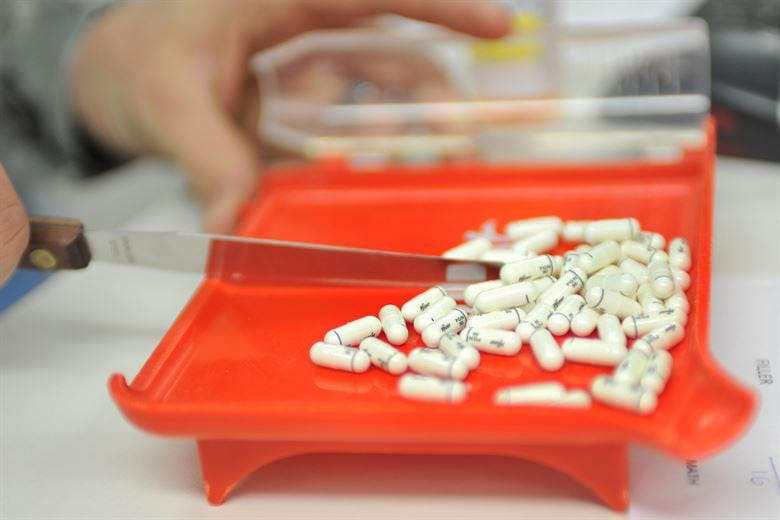One of the biggest misnomers when it comes to America’s addiction epidemic is that the dangers of substance use disorder and overdoses stem from America’s rising rates of heroin addiction. Certainly drugs like heroin are potent, dangerous and often deadly, especially when cut with synthetic drugs like Fentanyl. However, what is extremely important to recognize is that addiction and the dangers of potential overdoses do not simply come from the use of illicit drugs like heroin. Prescription drugs, and not just prescription opioid painkillers but other prescription medications, are also extremely dangerous when misused.
Opioid painkillers like oxycodone, hydrocodone, morphine and codeine that are often prescribed (and overprescribed) for pain are the first types of prescription drugs that people think of when thinking of the dangers of prescription drugs and prescription drug misuse. Opioids work by binding to the brain’s opioid receptors and reduce the sending of pain messages to the brain and reduce feelings of pain for the individual. When a person takes opioid pain medication long enough they will develop a physical dependency to the medication. In many cases, individuals will then begin to take more opioids than prescribed in order to get the same effect they would have when they began taking them. The dangers of opioids at higher doses can slow breathing and heart rate and ultimately result in overdose or death. It is also extremely dangerous to mix opioids with alcohol or benzodiazepines.
However, opioids are not the only prescription medications that can be dangerous to misuse. Benzodiazepines like Xanax, Klonopin, Valium and Ativan can also be extremely dangerous when misused. Benzodiazepines have been prescribed for years to treat issues like anxiety and seizure disorders. They act on the central nervous system (CNS) to produce sedation, muscle relaxation and lower anxiety levels in patients. They pose a very real threat for misuse, overdose and potential death.
Stimulants that treat attention deficit hyperactivity disorder (ADHD) and narcolepsy like Adderall, Ritalin and Concerta also have a high risk for misuse and abuse, especially within the adolescent and college-aged young adult population. College students often misuse stimulant medication while studying for exams in college and stimulants are often misused in high pressured industries and industries where employees need to be awake for long work hours. Stimulants are typically prescribed to treat short attention spans, impulsive behaviors and hyperactivity. Stimulants increase the dopamine levels in the brain, mimicking the way dopamine is naturally produced. Misuse of stimulants can manifest as aggression, dangerously high blood pressure, rapid heartbeat, coma or even death.
Another regularly misused prescription medication is sleeping pills and types of sleep medication, such as Ambien, Sonata and Lunesta. Often prescribed to treat short-term insomnia, many users of sleeping pills become dependent or addicted to the medication. Sleeping pills bind to the same GABA receptions in the brain as benzodiazepines. Over time, the brain becomes accustomed to the effects of the prescription medication and recovery becomes more difficult. Many times, people coming off of long-term use of sleep medication will suffer from something called “rebound insomnia”, or a compounded insomnia that many describe as worse than it was before they started taking the drug in the first place. Sleeping pills slow down the nervous system and can put users at risk for taking too many and ultimately leading to an overdose.
In terms of prescription drug misuse and abuse, one of the biggest issues that cause issues and even overdoses are mixing different medications or mixing prescribed medication with alcohol. Mixing certain prescription medications with alcohol can cause nausea and vomiting, headaches, drowsiness, fainting or loss of coordination. It can also put the user at high risk for internal bleeding, heart problems and difficulties breathing. Additionally, alcohol can sometimes make medication less effective or even useless, putting the user at risk of overusing the medication to achieve the same effect and therefore an overdose as a result.
Along with overdoses, misuse or abuse of prescription medications can cause numerous issues for patients, including health problems, addiction or dependency, poor judgment, impairment and decreased physical abilities leading to accidents, poor academic performance, and legal troubles. Medication of the type described above can cause risk even when used as prescribed, therefore the immediate and long-term risks of misusing or abusing prescription medication cannot be emphasized enough. It is always important to consult a physician in regards to prescription medication and be absolutely transparent with them about your personal situation as possible and to always use medication as prescribed. It is also important to research what the side effects of a medication may be and the dangers of mixing that medication with other medications or alcohol. It is important to remember that just because a drug is medically prescribed, does not mean that it is necessarily safe or that it cannot be misused. A big misconception from society is that prescription medications are safer than “street drugs” when that is not necessarily the case. Prescription drugs can be as addicted and deadly as heroin or cocaine, is misused or abused. Finally, it is vital to understand that no one truly knows their own disposition to dependency and addiction when initially prescribed a medication, so you should always stay vigilant and if it seems that you may be experiencing issues with a prescription medication to always seek out help.
If you or someone you know is in need of help because of drug and/or alcohol abuse or addiction, please give us a call. Maryland Addiction Recovery Center offers the most comprehensive dual diagnosis addiction treatment center in the Mid-Atlantic area. If we aren’t the best fit for you or your loved one, we will take the necessary time to work with you to find a treatment center or provider that better fits your needs.
